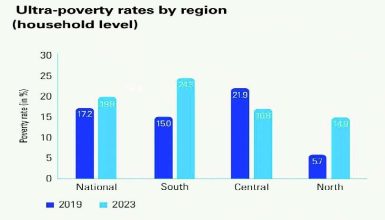Bad debts soar amid falling consumer demand
The level of non-performing loans (NPLs) has been on the rise, increasing by 20.7 percent per year, published data has shown.
World Bank calculations based on Reserve Bank of Malawi (RBM) data published recently show that NPLs as a ratio of gross loans, increased to 7.4 percent in April 2023.
This is a rise from 6.1 percent recorded in April 2022 and 6.6 percent recorded in January 2023.
In an interview on Monday, Consumers Association of Malawi executive director John Kapito attributed the high bad debt levels to rising cost of borrowing and declining consumer demand amid rising cost of living.
He said: “The cost of borrowing has risen to levels that very few can afford to pay back. It is becoming even harder for those that borrow to buy and sell as consumer demand for goods and services has drastically gone down due to lack of disposable incomes.

“Again, individuals are finding it hard to pay any loans as cost of living keeps rising, providing no extra resources to pay loans while we continue seeing high interest rates and charges.”
Kapito said it is a hard time for both industry and consumers and the banks need a review of their policies on borrowing.
RBM data shows that as at the beginning of 2023, the wholesale and retail sector accounted for 29.2 percent of total NPLs, followed by the restaurants and hotels sector at 23 percent and the community, personal and social services sector at 19.4 percent.
Although lending to the restaurants and hotels sector accounted for 3.8 percent of the total private sector credit, the NPLs for this sector account for 23.0 percent of NPLs, reflecting a potential impact of lagged returns from capital investments to cover loan obligations.
In April, RBM raised the policy rate from 18 to 22 percent amid worsening inflation outlook.
The hike of the policy rate, which is the key driver of interest rates on loans, in turn compelled commercial banks to raise their interest rates from 21 percent, raising the price of loans even further.
Meanwhile, upward pressures on prices have contributed to headline inflation increasing to 29.2 percent in May 2023, pushing up the cost of living to an average of K377 892 for a family of six, up from K257 028 during a similar period last year.
Centre for Social Concern project officer Kondwani Hara is on record as having said that high inflation, currently at 29.2 percent, coupled with low industrial production will result in the continuous rise of the cost of living.





